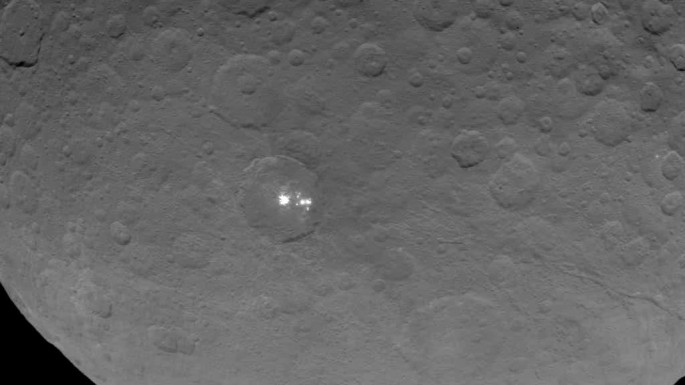Scientists are now taking their closest view ever of the numerous, mysterious bright spots found on the dwarf planet, Ceres.
Last May 16, NASA's Dawn spacecraft has captured a series of images that presented amazing, never before seen detail of the smaller bright spots that spurred awe from perplexed scientists. These photos were taken from a distance of 4,500 miles that possessed a resolution of 2,250 feet for every pixel.
According to the principal investigator for the Dawn mission, Christopher Russell, who is also from the University of California, Los Angeles, scientists can readily confirm that the intensity of the brightness emanating from these mysterious spots is caused by the sunlight bouncing off from highly reflective material on the surface of the planet, which can also be ice.
The spots were first observed last March, when scientists first thought that they were produced by powerful reflective material which this latest set of images can now confirm.
When the Dawn spacecraft continued its steady approach to Ceres, it recorded a second batch of images of the spots taken during April 14 and 15 within a vantage point of 14,000 miles above the northern hemisphere of the planet.
Last May 11, a new set of images were also revealed that the original image of the two, bright spots were actually comprised of many smaller spots.
Dawn spacecraft arrived at Ceres last March 6, which is the first time any spacecraft has gone into orbit on a dwarf planet.
To date, scientists will now analyze and compare data from Ceres and the giant asteroid called Vesta which Dawn have observed between 2011 and 2012.
This will provide scientists new insights how the solar system formed during its infant stages as scientists believe that these two bodies can provide information which are also located in the major asteroid belt between Mars and Jupiter.





















